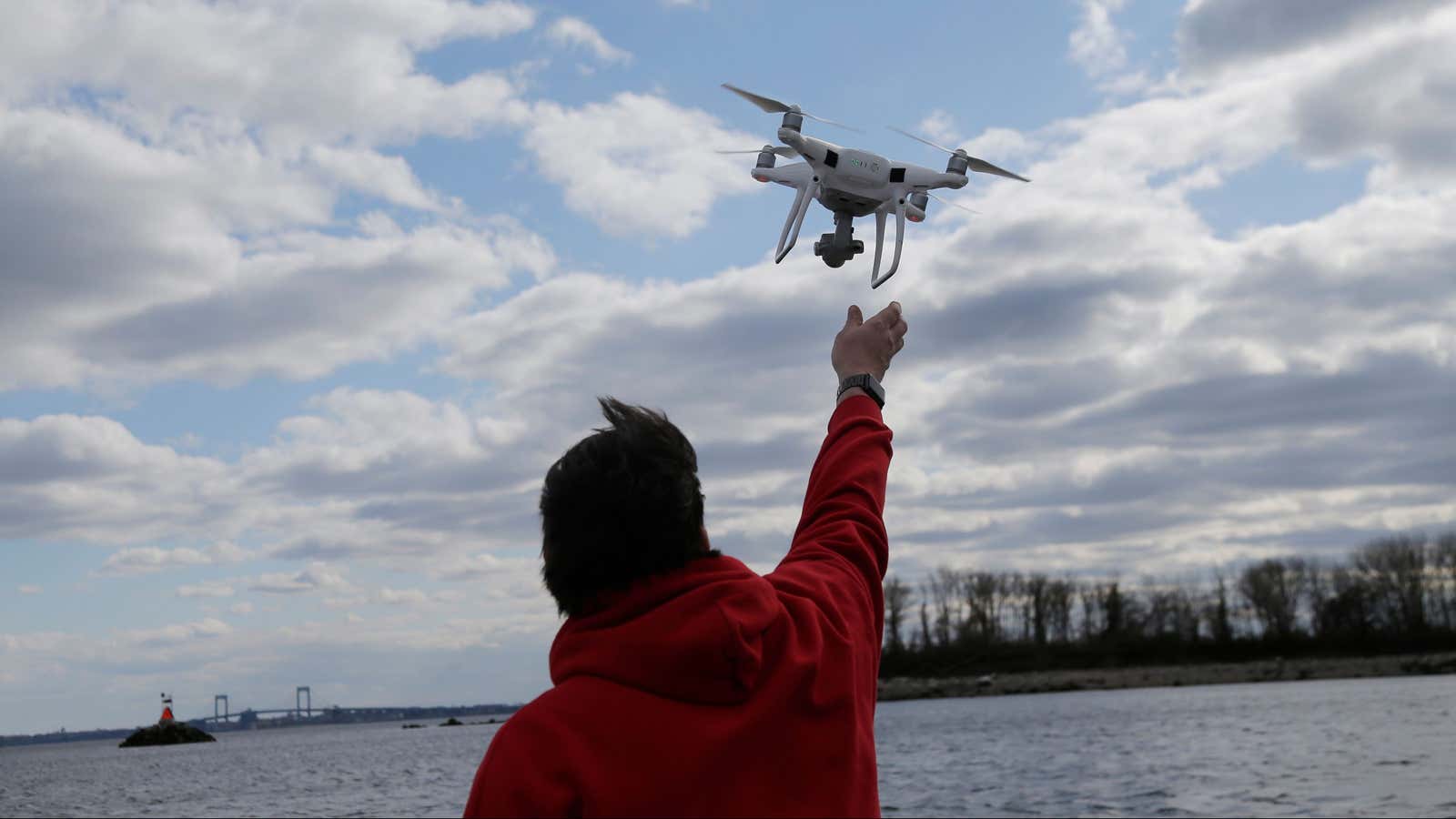When it comes to aircraft collisions, size doesn’t matter as much as you might think: Impact tests by the University of Dayton Research Institute show that even small drones have the ability to tear open a large airplane’s wing.
Researchers launched a 2.1 pound (952 g) DJI Phantom 2 quadcopter drone at the wing of a Mooney M20, a civil aviation aircraft, at a speed of 238 mph (383 kph), which mimics a real-life mid-air collision. Instead of shattering on impact, the drone, comparatively much smaller than the 2,380-3,380 lb (1,533 kg) airplane, bore a hole in the wing and damaged the spar (the main structural framework that supports the wing).
The results—including the video evidence above—were first showcased at the Unmanned Systems Academic Summit earlier this year. While the quadcopter eventually broke apart, “its energy and mass hung together to create significant damage to the wing,” said Kevin Poormon, group leader for impact physics at the University of Dayton Research Institute, in a press release.
Last October, a drone hit the wing of a commercial airplane in Canada, and in December, the same happened to a US Army Blackhawk helicopter in New York (both aircraft landed safely). A helicopter crash that occurred in South Carolina this past February is suspected to be the first drone-related crash in the US. These events prompted the University of Dayton Research Institute to conduct the test.
“We’ve performed bird-strike testing for 40 years, and we’ve seen the kind of damage birds can do. Drones are similar in weight to some birds, and so we’ve watched with growing concern as reports of near collisions have increased, and even more so after the collision last year between an Army Blackhawk helicopter and a hobby drone that the operator flew beyond his line of site,” Poormon said.
